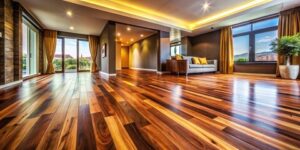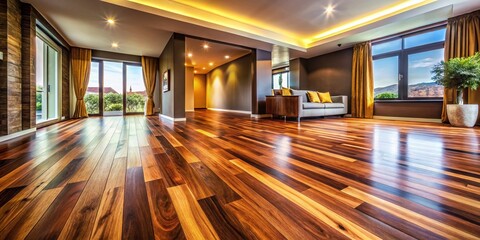LVP stands out from other flooring options due to its durability. It resists moisture, stains and wear, making it perfect for high traffic areas or homes with children or pets.
Many styles come with an attached underlayment for additional cushion and sound reduction. Foam underlayment is a common choice as it is affordable and easy to install. Contact Nashville LVP Flooring for professional help.
LVP flooring is a versatile option for a wide variety of design preferences. Its advanced printing technology allows it to mimic the appearance of premium materials like wood and stone, down to the most intricate textures and patterns. The result is floors that are virtually indistinguishable from the real thing.
From rich mahogany to rustic oak, and from polished marble to textured slate, wood-look LVP flooring offers many options for your home. Its versatility also extends to color, with shades that range from traditional brown to contemporary gray wash and everything in between.
Beyond its aesthetic qualities, LVP provides a host of functional benefits that make it well-suited for the entire house. For example, it is highly resistant to moisture and stains, making it ideal for kitchens and bathrooms. In addition, it is durable enough to handle high traffic areas without showing signs of wear and tear. These features also help to lower energy bills by reducing the amount of heat lost through the floor.
Moreover, unlike solid hardwoods, LVP floors are generally easier to install. Those with a click-and-lock system require no adhesive, which saves time and money. However, you should be aware that the floor may be susceptible to temperature fluctuations and other factors that can cause gaps or buckling over time.
Although not as luxurious as genuine hardwoods, LVP does offer inherent softness and slight resilience that can alleviate stress on the feet and joints. It is also a great choice for rooms where acoustics are an issue, as it can absorb and muffle noise. Moreover, it has an excellent insulating quality, which helps to maintain a comfortable temperature within the room.
In terms of upkeep, sweeping, vacuuming or extended mopping with a vinyl-safe cleaner are all effective methods for keeping your LVP floors clean. However, you should avoid using water or steam cleaners that are too hot, as they can damage the surface of the flooring. The waterproof wear layer that protects the core of each plank also makes it easy to wipe up spills and messes with a damp cloth.
Durability
LVP is more resistant to stains than traditional hardwood floors, making it a smart choice for homes with children or pets. Additionally, it’s easier to repair than many other flooring options if it does sustain damage, as individual planks can be replaced rather than having to reinstall a full floor. Combined, these benefits make LVPs a strong contender for busy homeowners looking for an attractive and durable floor.
Durability in LVP is influenced by the type of core material used, with SPC, WPC, and VC being among the most common types. The thickness of the wear layer also has an impact on durability. Typically, thicker wear layers offer better scratch and dent resistance. Additionally, the type of vinyl used for the outer layer can have an impact on the durability of the floor. For example, hard wood floors like oak or hickory tend to be more durable than soft pine.
One drawback to LVP is the potential for fading over time due to prolonged exposure to sunlight. Fortunately, this can be mitigated by using UV-protective window treatments and choosing a floor with a protective finish.
Inconsistent quality can also impact the longevity of an LVP floor, as lower-quality products may show signs of wear or damage earlier than higher-quality ones. This can lead to an unsatisfactory aesthetic in a room, so it’s important to select a product with a reputation for quality and reliable warranties.
LVPs are also relatively easy to maintain and care for, with regular sweeping and occasional mopping with mild cleaners usually enough to keep them looking their best. However, it’s important to avoid abrasive cleaners or steamers that can damage the vinyl. In addition, it’s a good idea to clean up spills and pet accidents promptly to prevent odors or staining.
Overall, the versatility, ease of maintenance, and durability of LVPs make them a great option for busy households. With a wide variety of styles available to match any design preference, these floors are a great alternative to other flooring options.
Affordability
Luxury vinyl plank (LVP) flooring is an affordable option for homeowners who desire the look of natural wood or stone. LVP is constructed with multiple layers of polyvinyl chloride, including a photographic layer designed to resemble different types of hardwood. It also features a tough wear layer that resists scratches and dents. This durable, moisture-resistant flooring is ideal for high-traffic areas of the home and those with children or pets.
A wide range of design options, including colors, patterns, and textures, help homeowners achieve the look they want at an attractive price point. With advances in printing technology, LVP can mimic the appearance of various wood species and even replicate texture to a degree that’s difficult to tell apart from real hardwood floors. Additionally, many LVP brands have UV-resistant protective layers that can minimize fading caused by exposure to sunlight.
As opposed to hardwood flooring, which requires regular refinishing and a significant investment, most LVP flooring is able to last for 20 years or more with minimal upkeep. This long-term durability makes it a cost-effective alternative for homeowners who desire the timeless beauty of wood floors but can’t afford to maintain them regularly.
The average cost of LVP flooring varies by brand, quality, design, and installation. However, the general cost of this type of flooring falls within the $2 to $7 per square foot range. The thickness of the planks and the core material can also significantly affect costs. Thicker planks offer improved durability and sound insulation, while cores made of WPC or SPC can be more expensive than traditional vinyl cores.
In addition to the price of the actual flooring, LVP installation costs can increase the overall project expense. Installers who specialize in LVP have the expertise necessary to ensure a smooth and visually appealing project. This can help to reduce the risk of costly mistakes that can be made by DIY installers.
Other cost considerations include the costs of underlayment and adhesives, which can be required for some installations. In addition, the dimensions and complexity of a space can play a role in project costs, as larger rooms typically require more materials to cover the area.
Easy Maintenance
LVP is a great option for homes with children and pets, as it is easy to clean and resists scratching. It is also durable and waterproof, making it a great choice for kitchens, bathrooms and mudrooms. This material is a good alternative to wood floors, as it costs less and is easier to maintain. It is environmentally friendly, made with recycled materials and renewable sources, and is a great choice for homeowners who want to reduce their carbon footprint.
LVP flooring comes in a variety of colors, patterns and textures that can mimic anything from reclaimed barn wood to smooth maple. Its versatility allows it to complement any design style, and its ease of maintenance makes it a popular option for busy families. However, there are a few things to keep in mind when laying and maintaining LVP flooring.
Proper subfloor preparation is essential to ensuring that your new flooring will look its best. Ensure that your subfloor is smooth and even before starting the installation process, and make any repairs as needed. Additionally, it is a good idea to use underlayment to protect your new flooring from moisture and dampness.
Regular sweeping and mopping with a mild cleaner are the best ways to keep your LVP floors looking great. However, it is important to avoid excessive water, as this can seep into the seams and cause damage. Also, be sure to only use a soft, microfiber cloth or sponge, as harsh chemicals and abrasive cleaners can scratch the surface of your floor.
It is also recommended to place protective mats at entranceways and in high-traffic areas, as this will help to trap dirt and dust and prevent it from being tracked into your home. It is also a good idea to vacuum your floors regularly, and to place pads under heavy furniture to protect the flooring from scratches and damage.
Finally, it is a good idea to cover your LVP floor with UV-protective window coverings to minimize fading caused by direct sunlight. This will not only help to protect the flooring, but it will also make your home more energy efficient by keeping the temperature down.

